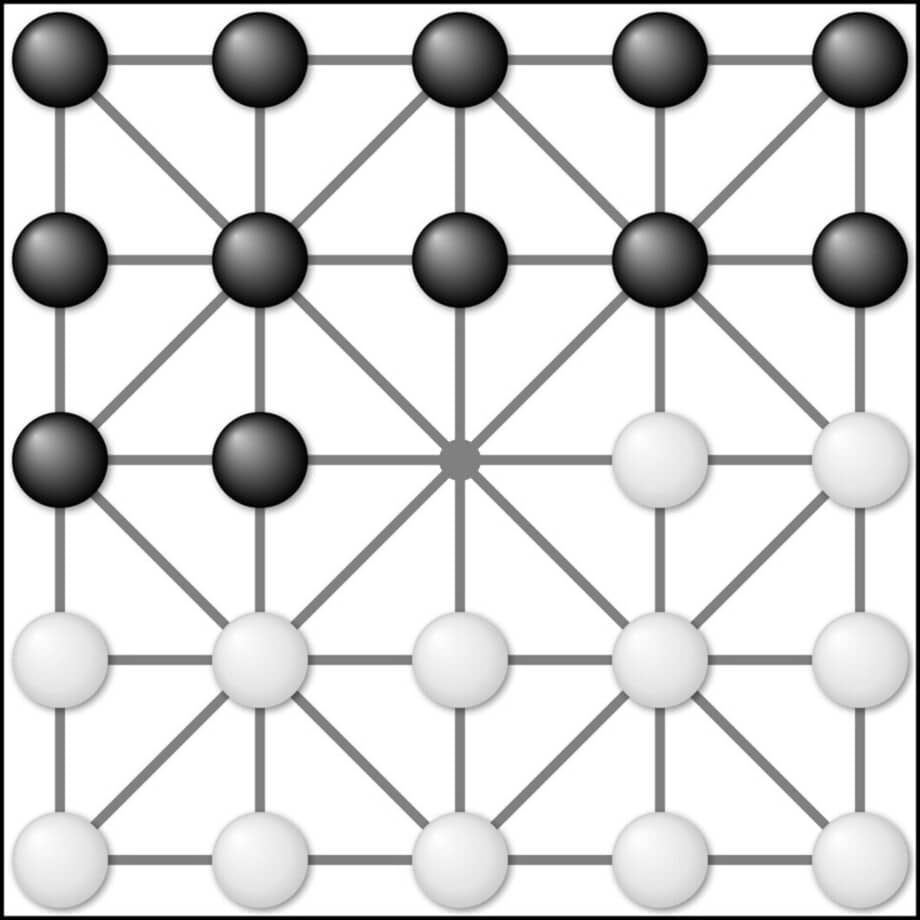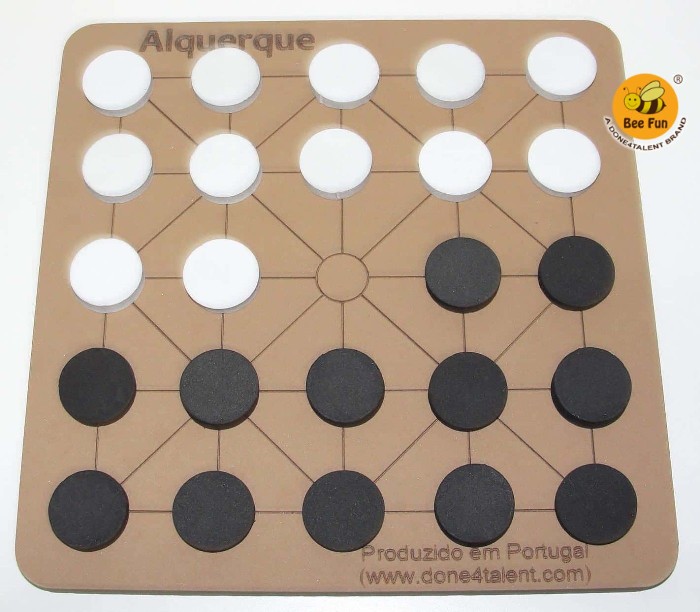ALQUERQUE - Strategy Game
Introduction
Alquerque, is a strategy game that may have had its origin in the Orient. It became very popular in Medieval Europe, particularly in Portugal and Spain. Its name seems to derive from the Arabic el-Quirkat.
Of uncertain origin, it is known among the Egyptians (c. 1400 BC) and Phoenicians (c. 900 BC).
This game is to be played by two people, alternately. One player plays with his 12 white pieces and the other with his 12 black pieces. The board above, consisting of 25 squares, shows the starting position of the pieces. The player with the white pieces starts to play.
The rules:
- You can move a piece from one square to a neighbour square when it is free. The move of each piece can be made in any of 8 possible directions: forwards, backwards, sideways and diagonally.
- To take or "eat" an opponent's piece, you must jump over it with your own piece. This only happens if your opponent's piece occupies a square nearby and there is an unoccupied square after it. The conquered piece is removed from the board.
- You are always obliged to "eat" one or more pieces when after the captured one there is a vacant square.

According to the version played, there are new rules usually considered:
- No pieces can move backwards.
- No piece can return to a square where it has been before.
- When a piece reaches the final line, it can only move to "eat" an opponent's piece.
The object of the game is to take all opponent's pieces. A player wins when:
- The opponent has lost all his/her pieces;
- None of the opponent's pieces can move.
Find out more at the website of the Portuguese Mathematics Society.

